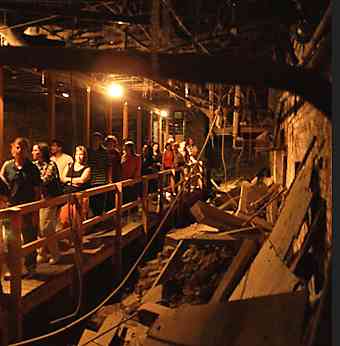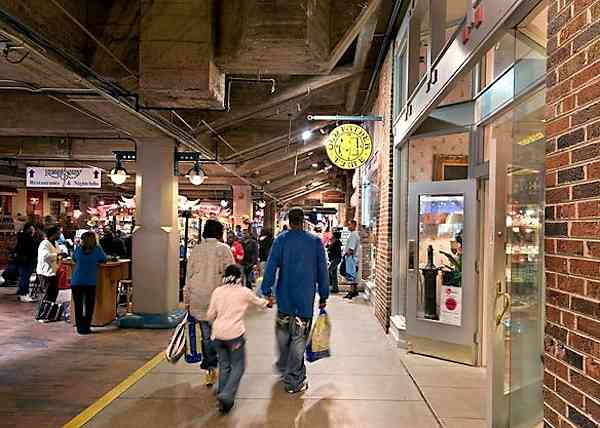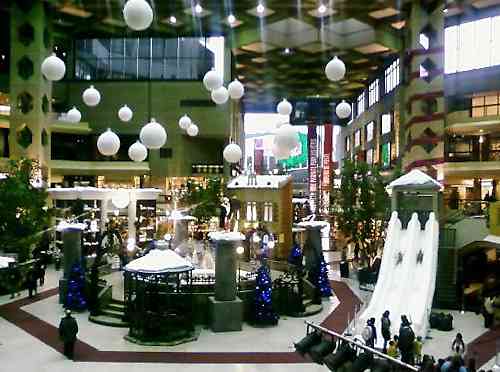Underground
Cities
Underground cities have often been associated with works
of fiction, such as those by Jules Verne or futuristic
films like the classic "Metropolis". These underground
cities offer a protected place to many to live, work,
eat, travel and shop. However, underground cities are
a reality today with thousands of people who conduct their
lives underneath the surface of the Earth.
|
|

Old Seattle Underground City |
Underground cities have become a reality because they
offer many of the attractions that people enjoy without
taking up space on the surface. Some of these cities developed
out of necessity while others came about through expanding
services that originated under the ground. In any case,
underground cities offer a new place for people to live
and work in comfort.
What is an Underground City?
Technically, an underground city is a system of linked
tunnels that provide a place for people to live, work
and move. Many underground cities were formed around transit
systems such as the subways which expanded their services
to incorporate shops, restaurants, working centers and
even places to live.
Underground cities work for a number of reasons, one
of which is that the environment is controlled which means
that they can exist in very hot or cold climates and maintain
a comfortable temperature. There are even larger buildings
and skyway systems in some underground cities that offer
the comfort of having raised ceilings with help alleviate
the claustrophobic feeling of being underground.

Atlanta Underground City
Where Underground Cities are Found
There are a number of underground cities around the world,
but the most famous is arguably the RESO in Montreal.
The RESO is the largest underground city in the world
and has more people living there than any other similar
city.
Another popular underground city is the PATH in Toronto
which features the largest underground shopping complex
in the world at nearly 4 million square feet of retail
space alone. These two Canadian cities are located in
the colder areas of the North American continent where
weather conditions during the winter can be brutal.
Japan has underground networks that individually are
smaller than their Canadian counterparts, but they do
extend to having nearly 10 million square feet of retail
shops across 76 shopping streets that are all located
underground. This expansion underground is due in part
to the cramped real estate conditions that exist on the
islands of Japan.
The United States boasts several small underground cities
with the one under Atlanta arguably being the most interesting.
Created to resemble the city of Atlanta as it appeared
in the 1920s, this underground city actually began in
1968 and was re-opened in 1989 and is still going strong.
However, Albany, New York's Empire State Plaza boasts
a number o features which include many restaurants, food
courts, a YMCA, a bus and police station and connections
to several governmental buildings.

Montreal Underground City
Underground structure exist in other U. S. cities including:
Boise, Idaho; Chicago, Illinois; Cleveland, Ohio; Dallas,
Texas; Crystal City, Virginia; Houston, Texas; Irvine,
California; Minneapolis and Saint Paul, Minnesota; New
York, New York; Oklahoma City, Oklahoma; Philadelphia,
Pennsylvania; Richmond, Virginia; Rochester, Minnesota;
Rochester, New York; Seattle, Washington; Vicksburg, Mississippi;
and Washington DC.
There is little doubt that underground cities will expand
over the years as the emphasis on maximizing space and
controlling the environment. For many, this will be the
wave of the future as more people will work and shop,
eat and live underground.
Written by Kevin Knatloa
Published on July 15, 2014
|